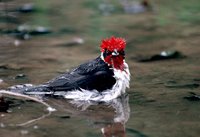
I have been thinking about this post for a long time -- which inevitably means it is going to be disappointing to both me and whoever reads it. I find that if you think about something too much it kills the best part of whatever idea got you started in the first place. But, in this case, I really had no idea where this post was going and so there is very little chance that I will kill the best part of the idea.
So, what have I been thinking about? General Jose de San Martin. Mendoza (and really all of Argentina) is riddled with statues, plazas, streets, schools, monuments dedicated to General José de San Martin. Why am I wondering about General San Martin in the middle of the night in the dead of winter? No reason really. But it is amazing to me how many things are named for San Martin in Argentina. Every city we have been to, regardless of size has a street named for the good general. It is usually the main street in town.
Random side note: In Utah the main street in every town is “State Street” – who was State and what did he do to have every main street named after him?
Who was San Martin? Are you crazy? That is like saying who was George Washington! Ok, a bit over the top there. But it is time for a bit of Argentine history.
San Martin is revered (not just liked or honored – revered I say!) in Argentina as the military hero who brought independence to the country; in Chile as the general who helped Bernardo O'Higgins oust the Spanish royalists; in Peru as the man who ended the vice-royalty system and liberated the country. His honorary titles included:
Generalissimo of the Ejército Unido de los Andes y de Chile
Fundador de la Libertad del Peru
Knight of the Andes
Santo de la Espada – Argentina’s greatest hero
One historian put San Martin’s legacy in these terms:
He knew how to win. Not a bad way to be known if you are a general.
San Martin began his military training at age 13 in Madrid. While in Madrid he became fast friends with Bernardo O'Higgins, who would become the other half of a famed duo that would oust the Spanish from South America.
A side note on Bernardo O’Higgins: He was sent to study in Europe by his father, Ambrioso O’Higgins. The elder O'Higgins failed to publicly acknowledge the young Bernardo as his son (the younger Bernardo was the child of a local Chilean lady of some prominence – not the elder O'Higgins’ wife) and never really new him. The elder O'Higgins was the Spanish Governor of Chile at the time and later became the Viceroy of Peru. So what is the payback for not getting to know your son? He grows up and liberates Chile and Peru from Spain – I bet the Spanish were none to pleased with the elder O'Higgins after that little indiscretion.
Anyway, San Martín started his reputation for defeating the Spanish in 1813 when he rousted royalist forces at San Lorenzo. While he felt good about pushing the Spanish out of Argentina, he recognized that Argentina could not be free until the threat from Chile and Peru, both strongly Spanish royalist, ended.

In 1817 San Martin and O'Higgins led their combined armies over a pass nearly 15,000 feet high in the Andes Mountains. The march over the Andes has been memorialized in Mendoza at the
Hill of the Glory.
Following Chile's independence, San Martin was offered the supreme dictatorship of Chile. He refused the honor. A few years later when he pulled off a similar victory in Peru he was offered the supreme dictatorship of Peru, which he also refused. Perhaps he was looking for a better offer.
There is a lot more to the story, but suffice it to say General San Martin did a lot. For all of his efforts he has a park (Parque de San Martin,) and a plaza (
Plaza de San Martin,) named after him in Mendoza.
Hope that wasn’t too boring – like I said it has been banging around in my head for a while – I should have let it out earlier.
 Why me? A question often asked by a person who has experienced bad luck. Why did the piano fall on my car? Why did my wife buy new boots? You all know the kind of bad luck I am talking about.
Why me? A question often asked by a person who has experienced bad luck. Why did the piano fall on my car? Why did my wife buy new boots? You all know the kind of bad luck I am talking about. 








